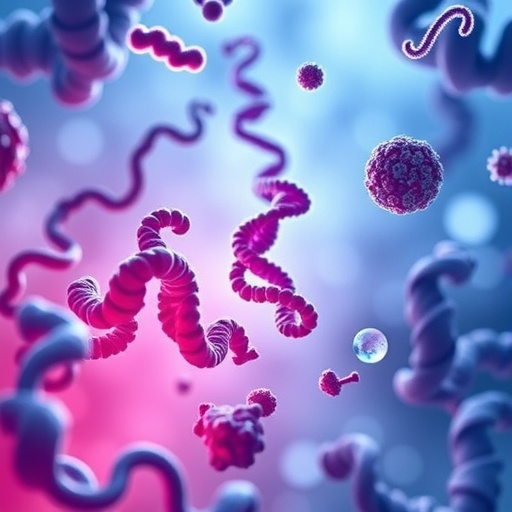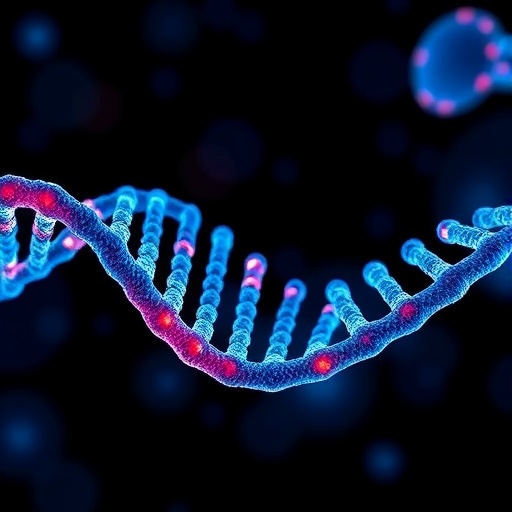In an era where precision medicine is rapidly evolving, the integration of chronobiology into therapeutic strategies marks a transformative leap forward. A groundbreaking study published in Nature Communications has unveiled an innovative system that enables the controlled release of therapeutic proteins in sync with the body’s intrinsic circadian rhythms. Spearheaded by researchers Franko, Li, Galvan, and their team, this work paves the way for drug delivery systems that harmonize with natural biological cycles, promising enhanced efficacy and reduced side effects.
Circadian rhythms—the roughly 24-hour cycles governing physiological and behavioral processes—have long been recognized as critical regulators of health and disease. These endogenous clocks influence hormone secretion, metabolism, immune responses, and gene expression. Yet, despite this foundational knowledge, few therapeutic interventions have successfully leveraged circadian biology to optimize treatment schedules or drug action profiles. Addressing this knowledge-to-application gap, the new platform reported by Franko et al. demonstrates how circadian biomarkers can be utilized to trigger the release of therapeutic proteins at precisely timed intervals.
At the core of this innovation lies a sophisticated biomaterial system embedded with molecular sensors that detect fluctuating levels of circadian markers. These biomarkers, reflective of the body’s internal clock states, mediate the matrix’s structural changes, consequently regulating protein release rates. Such a mechanism allows for the drugs to be dispensed in a temporal pattern mirroring physiological demands, potentially harmonizing therapeutic windows with disease or symptom exacerbation periods common in chronopathologies like asthma, rheumatoid arthritis, and cardiovascular disorders.
The study meticulously details the design and synthesis of the responsive delivery matrix, which integrates protein reservoirs within a polymeric scaffold functionalized by circadian biomarker-responsive elements. These elements are engineered to bind or dissociate in response to molecular cues such as oscillations in cortisol, melatonin, or other circadian-regulated metabolites. By dynamically responding to these environmental signals, the scaffold modulates the release kinetics of the encapsulated therapeutic agents, thereby maintaining optimal bioavailability over the circadian cycle.
To validate their approach, the team implemented in vitro models simulating fluctuating circadian conditions and demonstrated a robust correlation between biomarker presence and protein release profiles. Moreover, preliminary in vivo assessments revealed synchronized pharmacokinetics, confirming that the system effectively tracks and responds to endogenous rhythmic cues within living organisms. This marks a significant advancement over conventional drug delivery vehicles, which typically rely on passive diffusion or externally controlled mechanisms devoid of intrinsic physiological feedback.
This adaptive release technology is particularly significant for therapeutic proteins, whose efficacy is often hampered by poor stability and narrow therapeutic windows. By aligning protein delivery with the body’s metabolic rhythms, the system not only enhances pharmacodynamic outcomes but also mitigates adverse effects linked to off-peak dosing. Such temporal precision could revolutionize treatments for chronic conditions necessitating strict dosing regimens, relieving patient burden and potentiating therapeutic success.
The implications extend to the burgeoning field of regenerative medicine as well, where timed release of growth factors and signaling proteins can direct tissue repair and cellular differentiation with unprecedented finesse. The circadian regulation paradigm introduced here offers a blueprint for responsive biomaterials capable of autonomous operation within the complex temporal landscape of living systems.
Beyond therapeutic proteins, the platform’s modular nature suggests versatility for broader biomolecule classes, including nucleic acids and small molecules. Tailoring sensor elements to additional circadian biomarkers could facilitate multiplexed drug release patterns, accommodating multifaceted treatment protocols that respond to multiple physiological states or disease stages.
Critically, the research underscores the importance of integrating systems biology perspectives into biomaterial design. The intersection of circadian biology with materials science establishes a new frontier, urging interdisciplinary collaborations. By understanding the molecular underpinnings of circadian regulation and embedding that knowledge into the physical architecture of drug carriers, the field is poised to develop smarter, self-regulating therapeutics.
The researchers acknowledge challenges ahead, particularly in scaling production, ensuring biocompatibility, and navigating regulatory pathways for such dynamically responsive devices. Furthermore, individual variability in circadian patterns presents a hurdle in standardizing delivery systems, suggesting future developments will need personalization strategies perhaps informed by wearable biosensors or genomic data.
Nevertheless, the proof-of-concept provided here offers a compelling glimpse into next-generation chronotherapy technologies. As chronic diseases increasingly dominate global health burdens, the promise of circadian-aligned drug delivery systems could transform patient care paradigms through improved adherence, minimized toxicity, and maximized therapeutic impact.
In summary, the innovative regulatory system presented by Franko and colleagues exemplifies a leap towards harmonizing pharmacotherapy with the endogenous temporal rhythms of human physiology. By leveraging circadian biomarkers to orchestrate the timed release of therapeutic proteins, they provide a blueprint for intelligent drug delivery platforms that dynamically interface with the body’s internal clocks. This paradigm not only redefines drug administration but also exemplifies the profound potential residing at the nexus of circadian biology and advanced material design.
The convergence of biology, materials science, and engineering in this study offers a compelling narrative of how temporal control in therapeutic interventions is not merely beneficial but may be essential for optimizing treatment efficacy in a myriad of conditions. As this research trajectory progresses, it is anticipated that circadian-responsive platforms will become integral components of personalized medicine toolkits, ushering in a new era where treatment regimens are as finely tuned as the rhythms that govern our biology.
Looking forward, the integration of real-time monitoring systems with these responsive delivery matrices could enable closed-loop therapeutic approaches. Such systems would continuously gauge biomarker levels and adjust drug release accordingly, ensuring patients receive precisely what is needed, when it is needed. This dynamic interplay promises to elevate healthcare from reactive to proactive, aligning therapy with the biology of time itself.
With the publication of this study, the scientific community gains invaluable insights and practical tools to further investigate and harness the timing dimension in drug delivery. The marriage of circadian science and therapeutic engineering challenges us to rethink conventional dosing paradigms and heralds a future where chronotherapy is not an afterthought but a foundational principle in clinical practice.
Subject of Research: Regulation of therapeutic protein release controlled by circadian biomarkers through biomaterial-based drug delivery systems.
Article Title: Regulation of therapeutic protein release in response to circadian biomarkers.
Article References: Franko, N., Li, S., Galvan, S. et al. Regulation of therapeutic protein release in response to circadian biomarkers. Nat Commun 16, 9812 (2025). https://doi.org/10.1038/s41467-025-64761-9
DOI: https://doi.org/10.1038/s41467-025-64761-9
Tags: circadian biomarker integrationcircadian rhythms and healthcontrolled protein releasedrug delivery synchronizing biological cyclesgene expression and therapeutic interventionshormone secretion and circadian influenceimmune responses and circadian biologyinnovative biomaterials in healthcaremetabolism and protein release timingmolecular sensors for drug deliveryprecision medicine and chronobiologytherapeutic protein delivery systems





